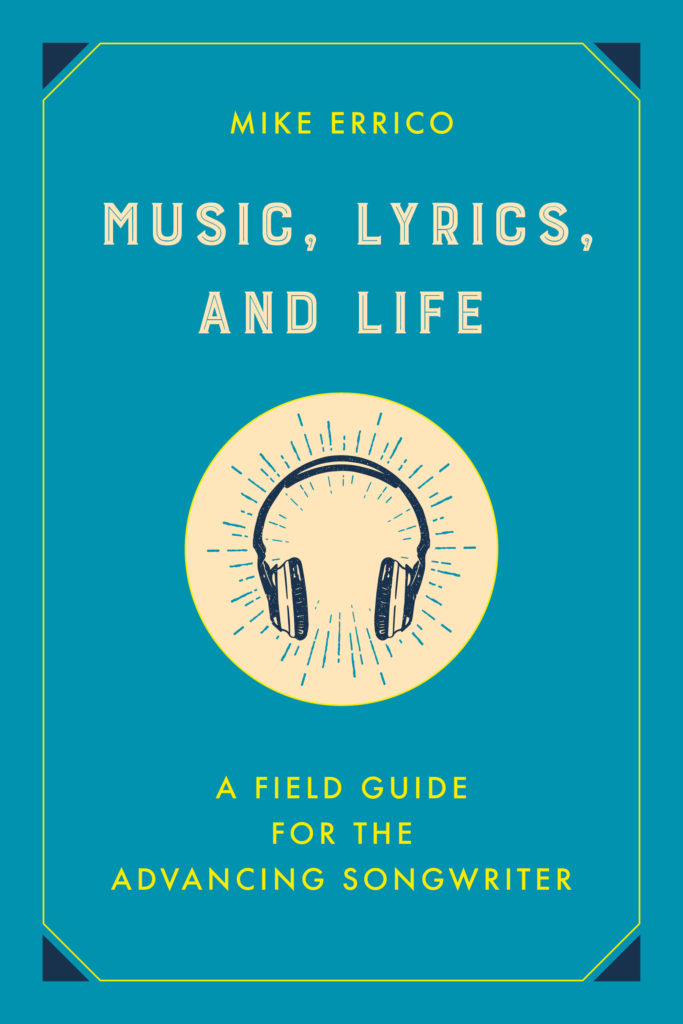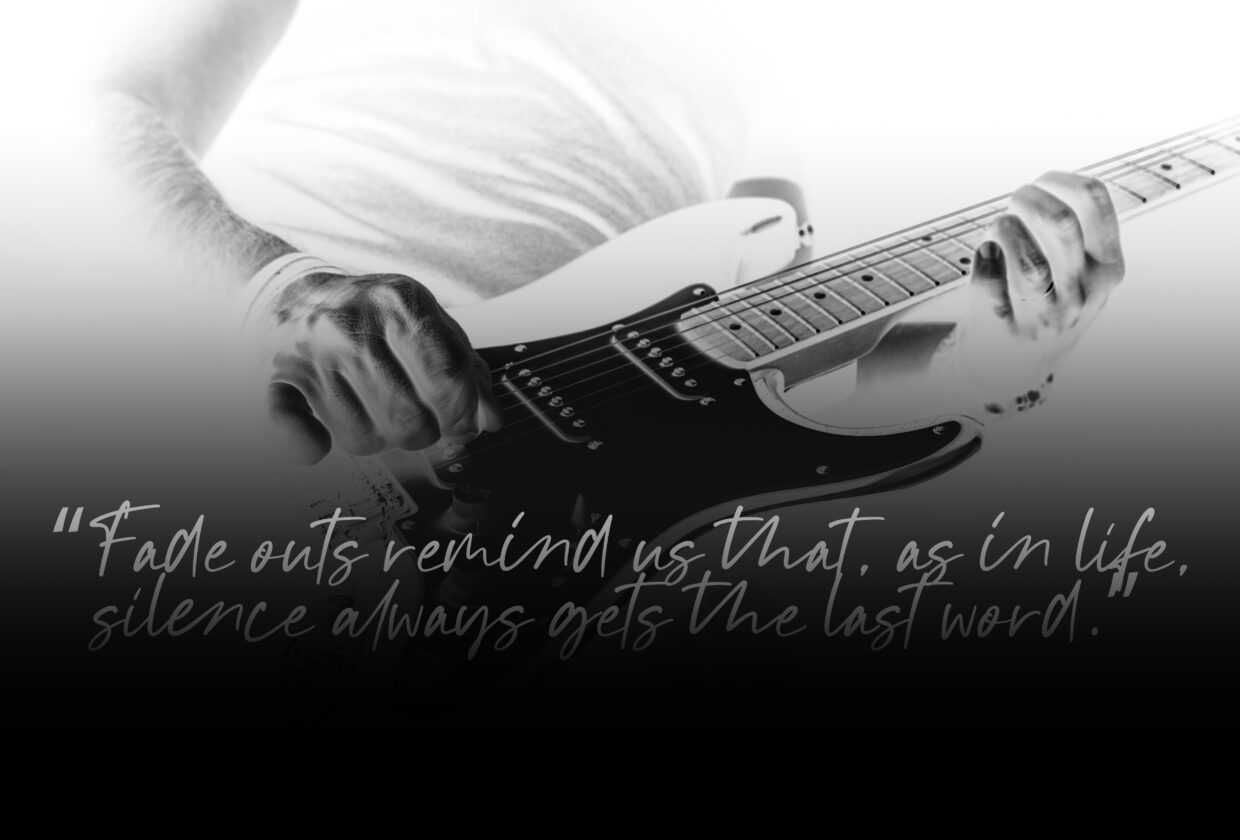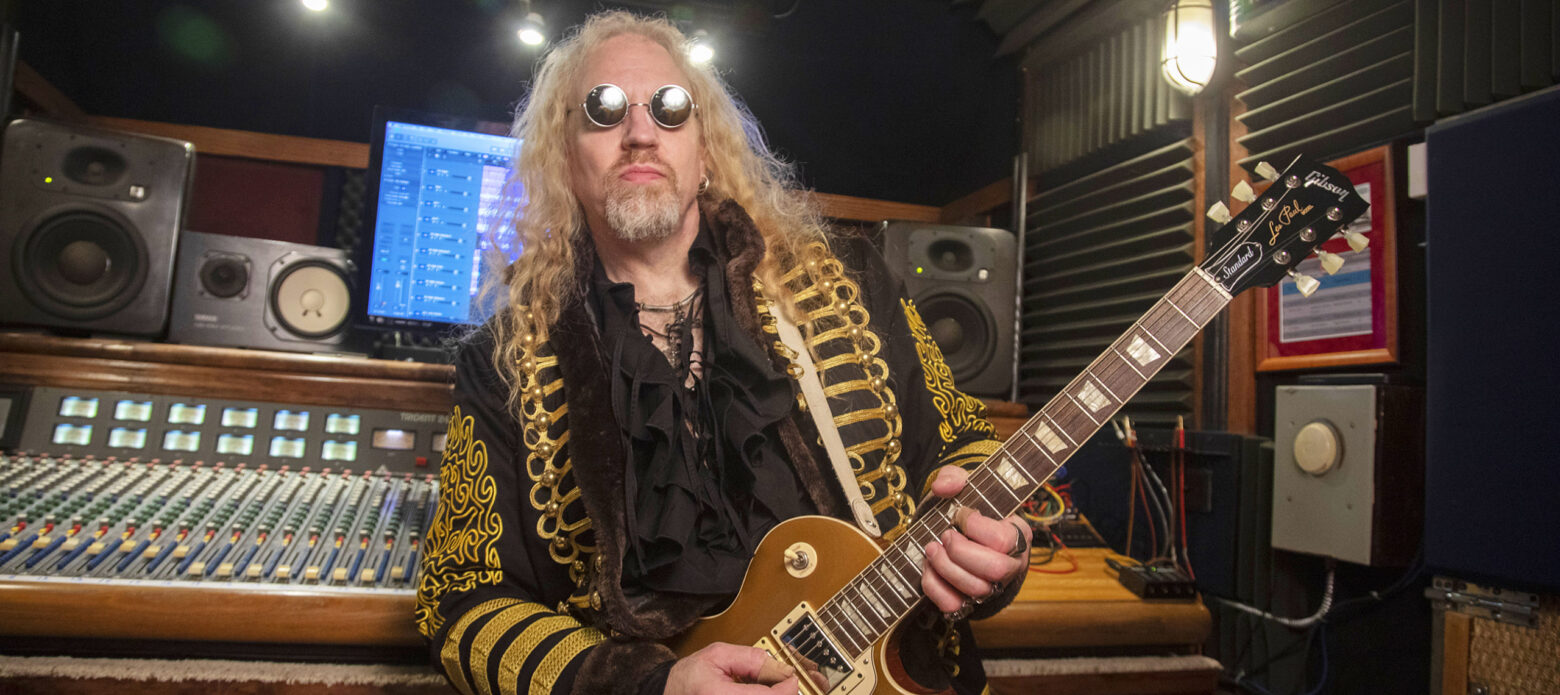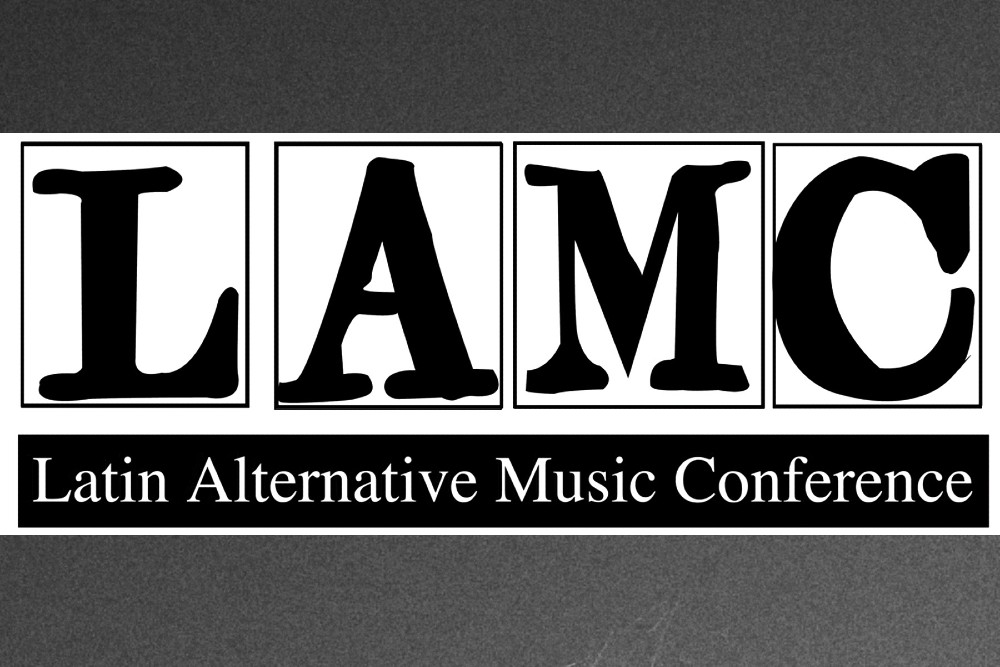Why do some songs fade out at the end? How does that choice affect the meaning of a song? And who came up with the idea, anyway? Jim Anderson—multi-Grammy winner and 2022 nominee for Immersive Audio album (Jane Ira Bloom’s Picturing the Invisible: Focus 1)—has answers.
Parts of the following interview are excerpted from Music, Lyrics, and Life: A Field Guide for the Advancing Songwriter, available everywhere, including: | Bookshop | Books Are Magic | Amazon | Bandcamp (signed copies)

The popular expression, “You never get a second chance to make a first impression,” has a less-celebrated corollary: You don’t get a second chance to make a last impression, either. A major songwriting challenge is how to construct those first and last impressions in order to bookend the musical universe writers have created.
Unlike artists who work in other forms (novels, paintings, etc.), songwriters have a tool that takes advantage of the audio medium: the fade out. Part technological, and part metaphorical, the fade out can imply continuity—the song goes on forever—as easily as loss—the song goes on forever without you. One reason a fade is so expressive is because it reintroduces us to the universal language of silence—fade outs remind us that, as in life, silence always gets the last word.
There’s just one problem: At the moment of this writing, fades are very out of fashion. I teach songwriting at several universities, and when a student of mine uses one, they get applause from classmates for the audacity. Fades are retro. They’re vintage. They’re even cinematic, which is actually true: the term “fade” is borrowed from film, which originated around the same time as recorded music. The gradual deprivation of sound in a fade out parallels the deprivation of sight when a scene “fades to black.”
In order to better understand why writers and producers choose to fade, I spoke with Jim Anderson, producer and sound engineer; former president of the Audio Engineering Society; multi-Grammy Award–winner; and nominee (along with partner Ulrike Schwartz) for this year’s Grammy for Immersive Audio Album, Jane Ira Bloom’s Picturing the Invisible: Focus 1.
What causes someone to decide on a fade? I think sometimes the song kind of tells you what it wants to do at the end. Sometimes it’s an artistic choice, and sometimes you really don’t have an ending, or you just want to vamp and let it go. Years ago, I observed [bassist] Jaco Pastorius recording the Word of Mouth album at [New York City recording studio] Power Station. It was Jack DeJohnette [drums], Herbie Hancock [keys], Toots Thielemans [harmonica], and a room full of brass players and all that kind of thing. And I heard Jaco say to the engineer, “What we’re going to do is, when we get to the end of the chart, they’re going to vamp and I’m going to leave the room. And one of two things is going to happen: We’re going to run out of tape; or the whole thing will just fall apart, and that’ll be my fade.” It’s another bow in the quiver.
To what degree did fades come from the limitations of the studio—the wax rolls, tape reels, and such?
Well, popular music was always being dictated by the medium or by the technology. So, if you had a cylinder or a 78, you were always limited to two and a half, three minutes. If the song went on beyond that, you had to fade. Then they developed the slightly ultrafine groove—Edison came up with this—so you could get about four minutes on a cylinder. But when the 45 came out, you were still kind of locked into something in the neighborhood of two and a half to three minutes. And so on.
Are there fades that predate technology?
The first one that I’m aware of, and it’s fairly famous, is the Haydn Symphony No. 45 [“Farewell,” 1772]. Basically, the story was that Haydn and his musicians were held longer than anticipated [at patron Prince Nikolaus Esterházy’s Hungarian summer palace], and they wanted to go home and be with their families. So, Haydn wrote an extra movement after the piece: Every musician played their part, and when they were done, they’d blow out the candle on their music stand and leave the stage. Eventually, all that was left were two violinists sitting there, and [Esterházy] got the hint.
Kind of the opposite of how a bar will turn the house lights on at the end of the night. Yeah, you know—lights on, and out come the vacuum cleaners, and it’s time to go.
Outros can be dangerous, because they can serve as clearinghouses for all the extra ideas that didn’t make it into a tight, well-constructed song: wanky solos, excessive drum fills, vocal histrionics, endless space jams that linger like guests who aren’t getting the hint that the party’s over. In order to make a great last impression, I recommend a few possibilities:
1. Keep it. Whatever your music is getting people to do is something they want to keep doing. Dancing, running, chilling, sexing—you know. Don’t kill the vibe. Be the vibe. Extend the vibe. (But do a radio edit, too.)
2. Cut it. Many pop songs over the past decade end at the very last note of the final chorus. In short: Once you’ve said what you wanted to say, stop saying it.
3. Fade it. Let your songs admit to their own impermanence and slip from the listener’s grasp.
Which one gives the listener the best last impression?
This is a question that instinct and practice will answer. When we’re really lucky, we don’t make the decision—the song does. Some songs want to use traditional forms the way water fills a bucket. Others break the forms into the shapes they need to finish themselves. In those moments, it’s not entirely clear who’s doing the writing, who’s in the room, who’s pushing the pen or finishing the melodic phrases without your conscious assistance.
These are magical moments that keep songwriters coming back over and over, and that sense of runaway songwriting never fully leaves the finished product. You can hear it in there, forever.














